Was the Moon a Scorching World? Our lunar neighbor was once covered in an ocean of molten rock, data from India’s Chandrayaan-3 rover suggests
While the Moon may now seem like a cold, dusty desert, new evidence from India’s Chandrayaan-3 mission shows this wasn’t always the case.
Analysis of the lunar surface shows that the moon’s south pole was once completely covered by an ocean of molten magma.
When Chandrayaan-3 landed near the moon’s south pole in August last year, the Indian space agency collected 23 measurements of an area never before explored.
Their measurements revealed a uniform layer of ferroane orthosite, a white rock thought to have floated to the surface of the molten rock during the Moon’s formation.
This supports the ‘Lunar Magma Ocean’ (LMO) theory, which states that the entire surface of the moon was formed from a cooling layer of magma that formed 4.5 billion years ago.
New analysis of data from India’s Chandrayaan-3 mission has revealed the moon was once covered in an ocean of molten lava (Photo: Artist’s impression)
The LMO theory is not new – it dates back to the 1970s – but the new findings now support the theory with evidence of molten rock on another part of the moon (the south pole).
On August 23, 2023, the Vikram lander successfully landed on a site at the lunar south pole as part of the Chandrayaan-3 mission.
Vikram’s landing site, at about 70 degrees south latitude, was the southernmost landing site ever reached by a landing craft.
For 10 days, Vikram’s smaller Pragyaan rover traveled across the lunar landscape, continuously recording and transmitting data to Earth.
This data includes 23 measurements from a device called the alpha particle X-ray spectrometer.
This lightweight instrument used a radioactive source to bombard the lunar surface with radiation, exciting atoms in the ground and measuring the energy released.
By recording the emitted energy, researchers were able to calculate the mineral composition of the lunar soil.
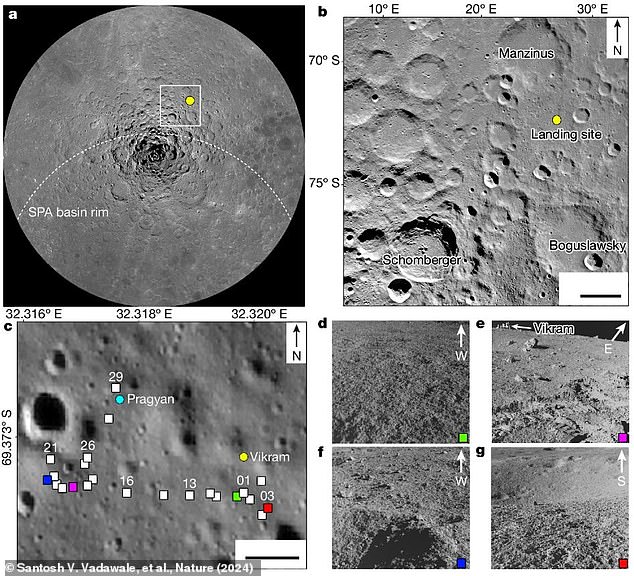
After the Vikram lander touched down at a site near the moon’s south pole (illustrated in yellow) last August, it deployed a rover that collected data on the moon’s mineral composition
The analysis showed that the area around the Chandrayaan-3 landing site was relatively uniform and largely composed of ferroanorthosite.
The researchers also found that the mineral composition at the Chandrayaan-3 site was similar to that of NASA’s Apollo 16 and the Russian Luna-20 mission.
What is special about this discovery is that the two landing sites are both located in the equatorial zone of the moon, far away from where Chandrayaan-3 landed.
The fact that these three distant locations all have roughly the same material composition suggests that they may all have originated from the same magma ocean on the moon.
The Moon is believed to have formed 4.5 billion years ago when a Mars-sized planet collided with Earth, hurling a chunk of matter into space.
As that material coalesced, the tremendous energies caused the rocks to melt, creating a vast ocean of magma that covered the entire moon.
As the surface cooled over tens to hundreds of millions of years, cooler ferroanorthosite rose to the surface, while heavier minerals such as olivine and pyroxene sank deep down, forming the Moon’s mantle.
It is believed that the current highlands on the moon are the remnant of this ancient crust after billions of years.
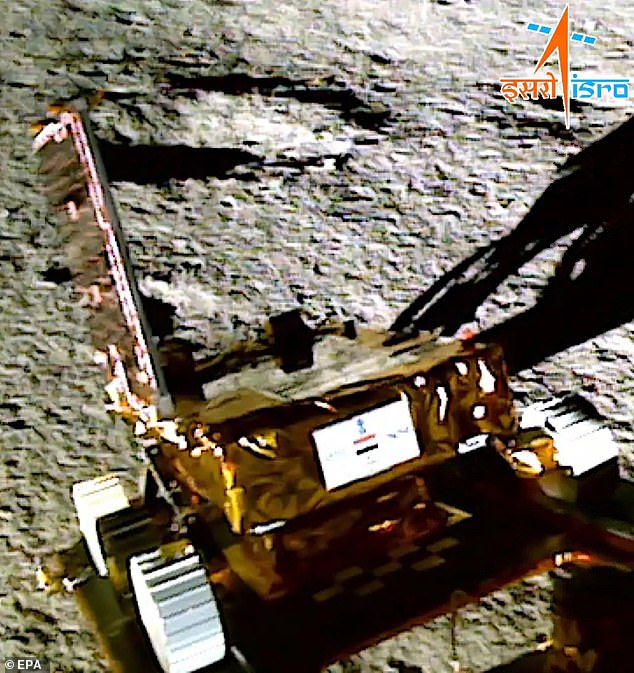
The Pragyaan (pictured) found that the area around the landing site was uniform and composed of ferroanorthosite, a white rock thought to have formed the crust of the ancient moon
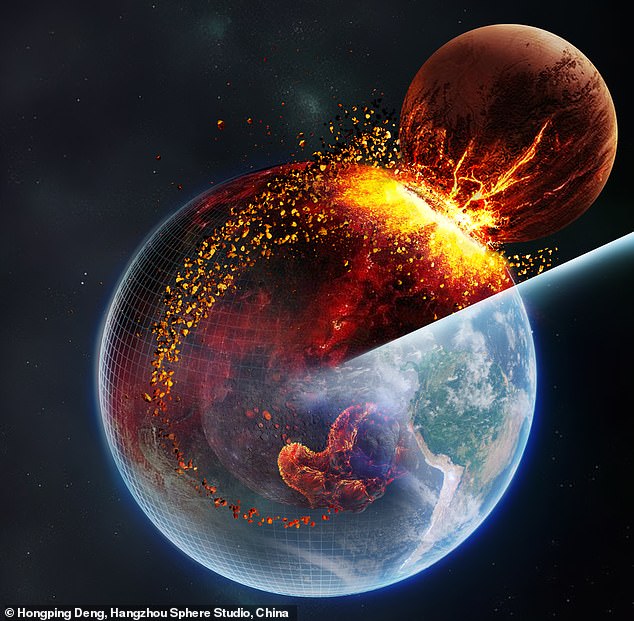
Experts believe the moon was formed when a Mars-sized planet called Theia collided with Earth, hurling material into space
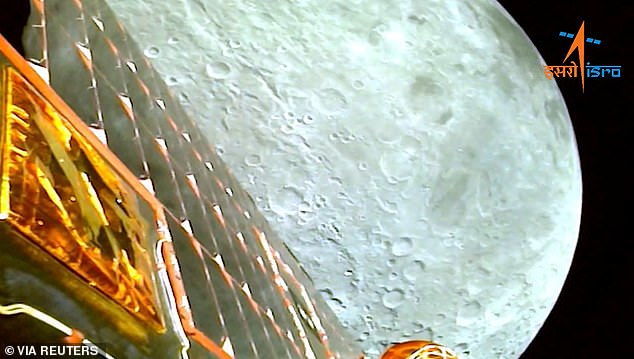
The data collected by Chandrayaan-3 (pictured) suggests that the moon was once covered by an ocean of lava. As it cooled, the lighter ferroan anorthosite rose to the surface and formed the ancient crust
Co-author of the paper Dr. Santosh Vadawale of the Physical Research Laboratory, told the BBC: ‘The theory of the early evolution of the Moon becomes much more robust in light of our observations.’
X-ray alpha particle data also provide evidence of a massive meteorite impact near the moon’s south pole.
Data collected by the rover showed that the area around the landing site contained much more magnesium than would be expected for pure ferroane anorthosite.
In their article, published in NatureThe researchers suggest that this material was ejected from the ground by a massive impact, washing the magnesium-rich materials deep into the Earth’s mantle.
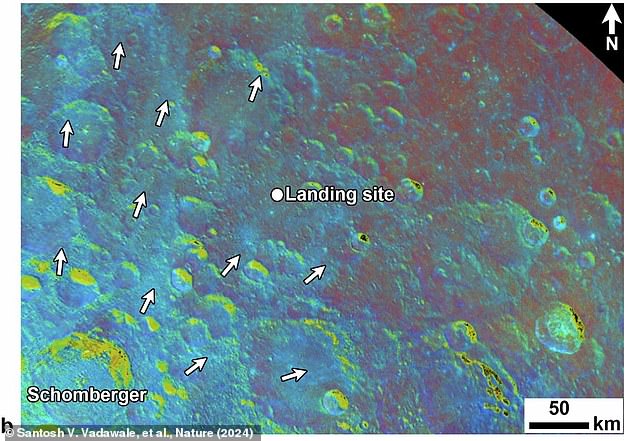
The researchers believe that magnesium was deposited in the soil by the same impact that formed the South Pole-Aitken Basin more than 217 miles (350 km) away. This magnesium was then further mixed into the area by impacts such as Schomberger Crater (impact illustrated)
This impact could have been the same meteorite strike that formed the 2,500-kilometer-wide South Pole-Aitken Basin, more than 350 kilometers away from Chandrayaan-3’s landing site.
The mineral finds confirm the idea that magnesium-rich rocks were spread across the site before being mixed by further meteorite impacts.
These findings are also important for the future of space research in India, as they provide a baseline for future observations.
Earlier, the Indian space agency had made observations of the lunar surface from orbit on Chandryaan-1 and 2.
But because there were no ground-based measurements, interpreting those observations required a fair amount of scientific guesswork.
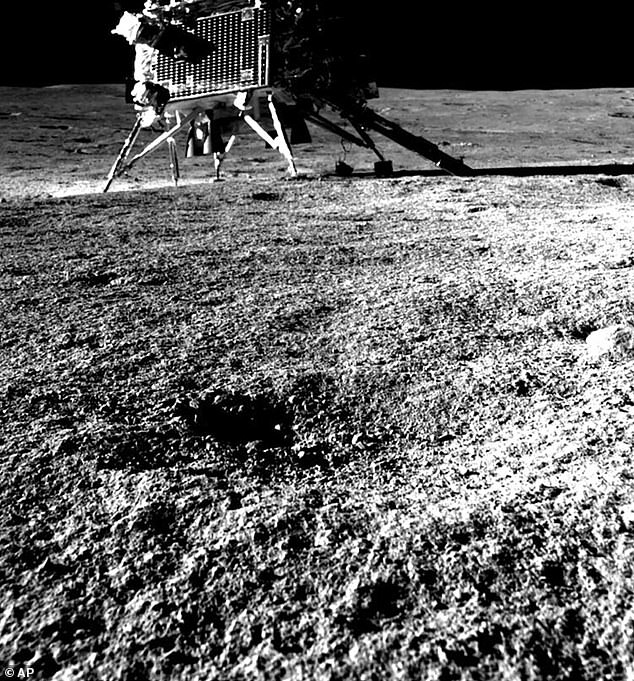
Beautiful: Indian Space Research Organisation (ISRO) image taken by Pragyan rover shows Vikram lander. Photo released on August 30, 2023
These new data, taken directly from the lunar surface, provide researchers with a “ground truth” against which to compare future orbital observations.
This could help the space agency refine its search for water, which would be a huge boost for future efforts to establish a manned base.
India plans to launch a new lunar mission in 2025 or 2026. The goal is to collect material and bring it back to Earth for analysis.
